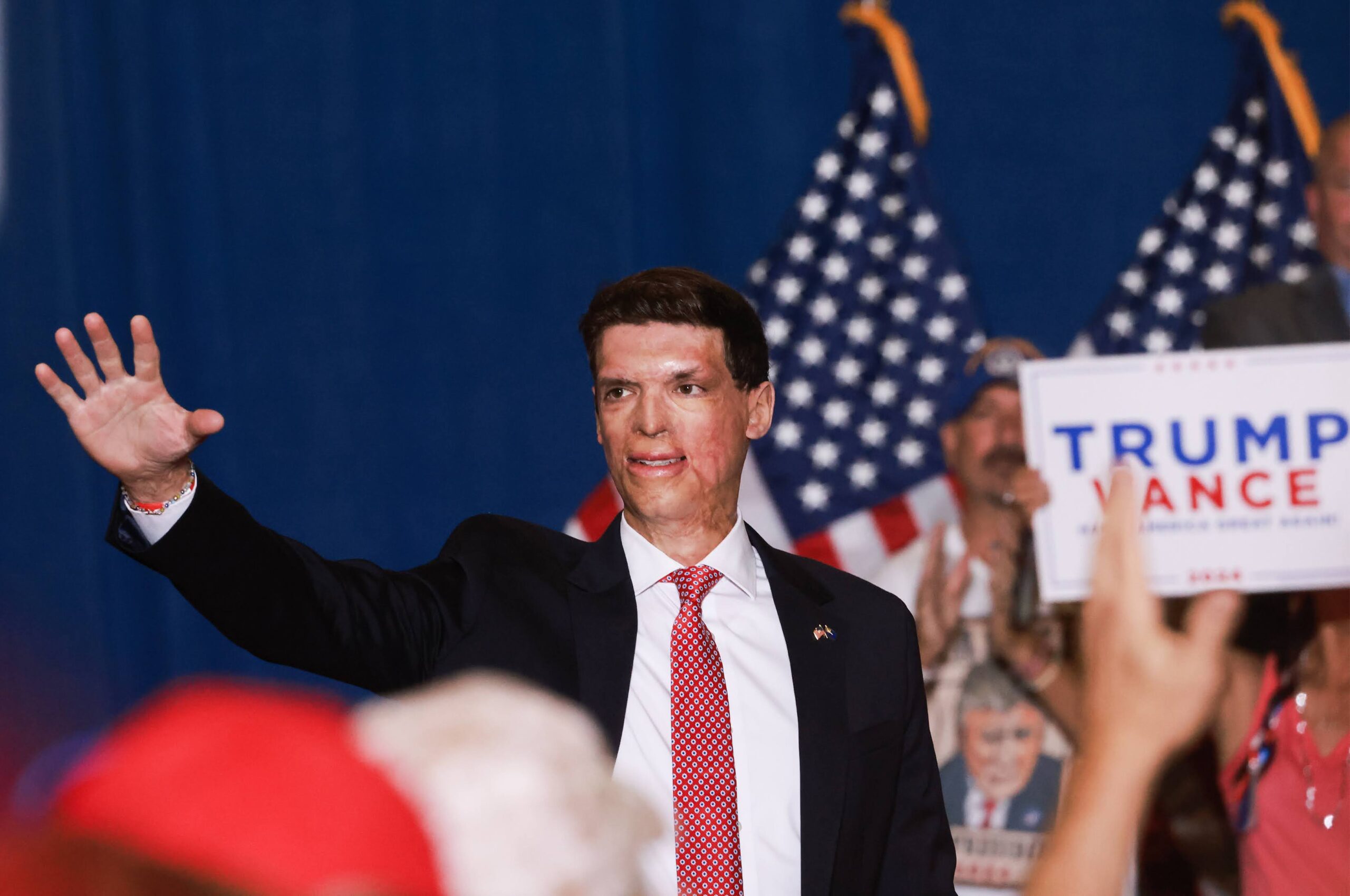After canceling its Nevada reservations, NRSC joins forces with Brown in hybrid ads

Vastly outspent by Democrats in the U.S. Senate race in Nevada, the National Republican Senatorial Committee (NRSC) has scrapped an ambitious spending plan and is now taking a different approach.
Last week, the NRSC, the chief fundraising arm of Senate Republicans and a key player in recruitment and strategy in Senate races, removed about $7.4 million in future independent expenditure advertising from stations in Nevada. On Wednesday, they rebooked some of that money as a hybrid ad with Republican candidate Sam Brown’s campaign, placing a $331,000 buy.
While the new NRSC spending is more efficient and therefore the apples-to-apples dollar comparison is less valuable, Democrats still have a resource advantage through the end of the cycle.
From Oct. 1 through the end of the year, Democrats booked nearly $27.7 million in ad spending; Republicans currently have about $9.7 million.
With hybrid advertising, the NRSC and the Brown campaign must put in equal funds and give equal time to a national issue as they do to the specific race, making for ads that can be clunky. The advantage is that these ads are purchased at the candidate rate — significantly lower than what stations charge outside groups such as the NRSC for independent expenditures. In Nevada, outside groups get charged 10 times more than campaigns, per Politico.
These ads — about Social Security, high costs or taxes on tips — don’t mention Sen. Jacky Rosen (D-NV) or Sam Brown until about halfway through the ad.
Public polls have routinely shown Rosen with a lead outside of the margin of error, though strategists in both parties expect the race to be close. With Democrat-held seats in other states appearing more vulnerable — analysts rate the Montana Senate race as “lean Republican” and Michigan, Ohio and Wisconsin to be “toss-ups” — some outside groups are choosing to spend there rather than in Nevada.
Senate Leadership Fund, the super PAC tied to Minority Leader Mitch McConnell (R-KY) for example, made a massive late September buy in Wisconsin, Michigan and Pennsylvania.
But by going back up on the air — albeit in smaller fashion, though more buys could come in the future weeks — the NRSC is sending a message that national Republicans still believe Nevada is worthy of investment.
“We have far more weight on television than we previously did due to our shift in strategy and will continue to support Sam Brown’s campaign to unseat Biden-Harris rubber stamp Jacky Rosen,” said NRSC spokesperson Maggie Abboud.
By contrast, the Democratic Senatorial Campaign Committee (DSCC), the Democratic equivalent of the NRSC, portrayed the strategy shift as an acknowledgment of Rosen’s advantage.
“Money talks, and Senate Republicans clearly know that Sam Brown has turned out to be a bad candidate whose MAGA agenda and decade-long anti-abortion record is deeply unpopular with Nevada voters,” DSCC communications director David Bergstein said in a statement to The Nevada Independent.
The NRSC conducted joint buys with 2022 candidate Adam Laxalt. They spent about $4.4 million on those ads from Oct. 1 onward. Thus far, the NRSC/Sam Brown joint effort has spent about $337,000 during the same period this year.
Campaigns often buy and adjust bookings on a weekly basis as dynamics change. Still, Republicans significantly lag Democrats in overall spending in the Senate race. In September, Rosen and allied outside groups outspent Brown and Republican groups by more than $5.5 million, per data from the ad tracking firm AdImpact.
From Oct. 1 through the end of the year in 2022, Democratic spending for Sen. Catherine Cortez Masto (D-NV) totaled $48.4 million while Republicans spent about $39.9 million for Laxalt. Cortez Masto ultimately won by less than 1 percentage point.
